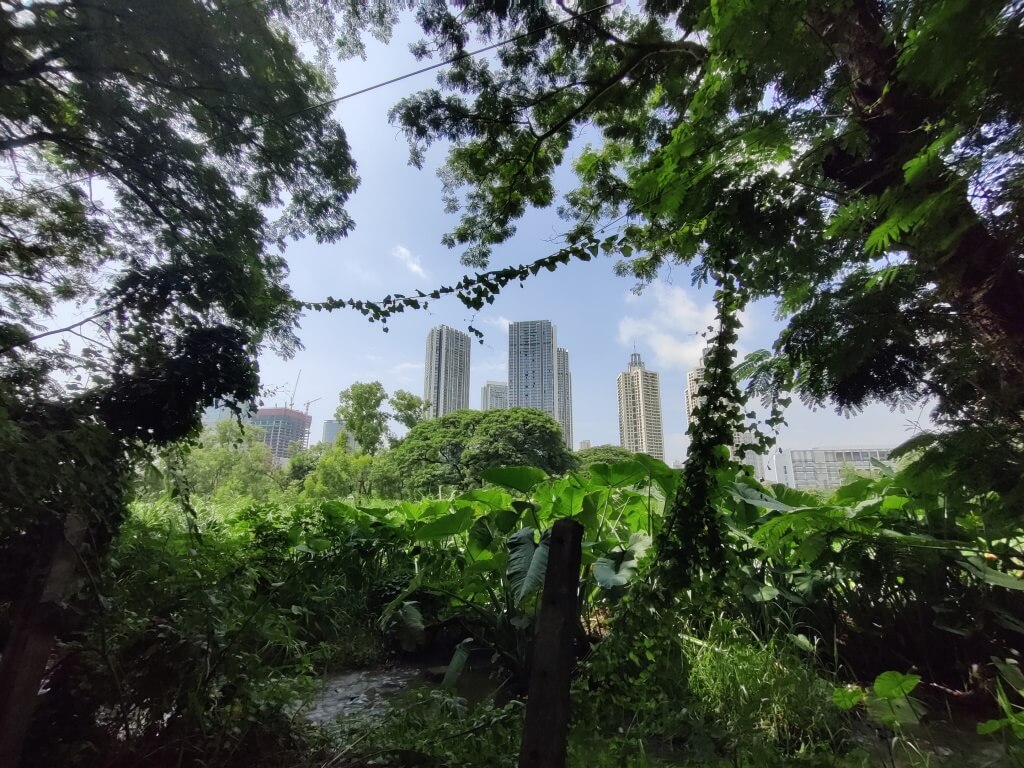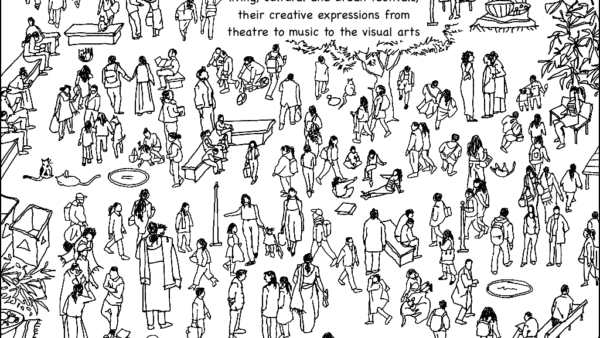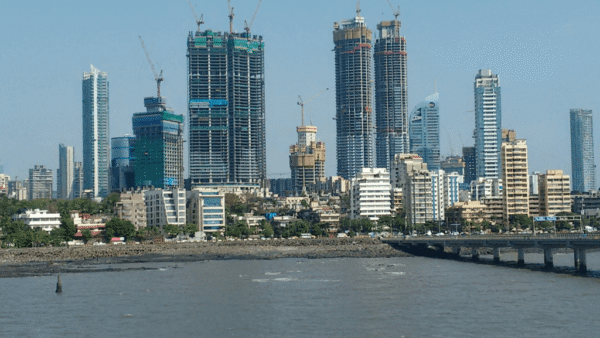“How many people think twice about a leaf? Yet the leaf is the chief product and phenomenon of Life: this is a green world, with animals comparatively few and small, and all dependent upon the leaves. By leaves we live. Some people have strange ideas that they live by money. They think energy is generated by the circulation of coins. Whereas the world is mainly a leaf-colony, growing on and forming a leafy soil, not a mere mineral mass: and we live not by the jingling of coins, but by the fullness of our harvests.”
These famous words by Sir Patrick Geddes (1854-1932) highlight the importance of green spaces and gardens in cities, which are shrinking as cities are concretised and rampant urbanisation drives them further away from their relationship with nature. Geddes, credited as the father of town planning, was a pioneer in merging the natural environment with the work of planners and architects. It is well known that Geddes donned multiple hats – biologist, geographer, sociologist, naturalist, environmentalist, and town planner. In his town planning, he used biological and botanical concepts to urge the building of cities in which the places and people would be organically linked to each other. [1]
The natural environment, in Geddes’ worldview, was not meant to be built over but to be incorporated into the town planning itself so that people would have vast verdant expanses. He intertwined both to envision the regeneration or renewal of cities along with a more cohesive and peaceful life for people. This planning for people and nature, rather than merely for the place or land, lies at the heart of Geddes’ approach to town planning. In his time in India from 1917 to 1924, he developed city plans for nearly 50 cities encompassing projects to larger city-scale plans, often discouraging the demolition of old neighbourhoods and natural environment.
Geddes’ work in Bombay, including detailed civic surveys of “towns” such as Bandra and Thana, and recommendations such as converting water tanks into parks, are contained in his “Report on Re-planning of Six Towns in Bombay Presidency” first published in 1915. In the rather short “Note” on Bandra, Geddes points out that “the entrance from the Causeway is quite insufficient” and goes on to make detailed suggestions of how the town could be made more liveable and green including “provision of space for roads to lead to future reclamations…a park of not inconsiderable acreage and landscape…a Band Stand with planting” among other improvements.
Geddes’ emphasis on creation of parks and green areas more than a hundred years ago acquires a new urgency in 2022 as Mumbai’s last green lung, the Aarey Colony forest spread over nearly 3000 acres, is brought under the hammer to make way for the controversial car shed of the Metro 3 line. This, as development plans show and activists fear, will open up the natural area to massive inroads of construction for other projects effectively reducing the green footprint in Mumbai. Reading Geddes while trees in Aarey are mercilessly chopped to clear the land for construction is unsettling, almost dystopian, but it is also a reminder that city planning is best when it incorporates natural and green spaces.
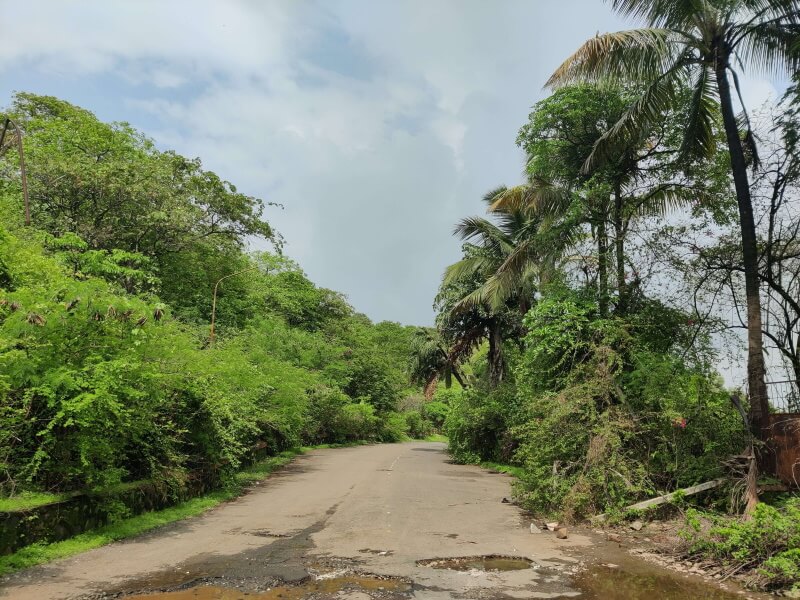
Photo: Jashvitha Dhagey
Geddes and the natural environment of cities
Geddes was ahead of his time when he believed that urbanisation would shrink the natural environment of cities, degrade them, and make them homogenised. He focused on words such as “ecology” and “environment” which were not used in the 20th century town planning. A trained biologist besides in other disciplines, Geddes believed that the development of human communities was biological in nature, consisting of interactions among people, their environment, and activities. He framed the relationship thus: “Like the living being it is, a city reacts upon its environment”.
Geddes considered many issues such as resource depletion, social inequity, urban sprawl, extinction of biodiversity and so on as precursors and parts of city planning. These are as relevant today as in his day. He viewed the city as a socio-spatial system for human life, and strongly believed that it is important to understand a city in order to plan it for the betterment of its citizens, and to transform the prevailing definition of progress from “an individual race for wealth to a social crusade of culture”. His focus thus, was not only on spatial planning but also on the cultural evolution and nourishment of city spaces to make them better and inhabitable. [2]
Geddes took a historical approach to study the modern city, and traced it from the ‘paleotechnic era’ that ‘dissipated resources and energies’. He viewed this age as ‘carboniferous capitalism’ dominated by exhausting the nature and natural resources, usage of non-renewable resources and their polluting impacts. [3] In his theory and practice of town planning, Geddes harboured the vision of an efficient ‘neotechnic city’ with ‘a more subtle and more economic mastery of natural energies’ that achieves a sustainable balance in the man and environment relationship. [4]
Where Geddes and Aarey meet
The Aarey forest, located on the northern side of Mumbai, has for years been an open space for walkers, joggers, and nature lovers who visit to take in the peace it offers from city life. It is home to at least 76 species of birds, 86 species of butterflies, 46 species of reptiles, 13 species of amphibians, 34 species of wild flowers, 16 species of mammals, five species of scorpions and several species of spiders [5]. In addition to being a biodiversity hotspot, it also helps regulate the city’s temperature, its green cover ensures cleaner air and better water absorption in the ground during Mumbai’s infamous monsoon months.
Geddes had not referred to Aarey perhaps because it was then a part of the natural forest area which is currently the Sanjay Gandhi National Park, but the Geddesian view of a city in relation to its water bodies or water sources [6] is apt for Aarey in present time. Mumbai is surrounded by the sea but it is equally a city which was once fed by its rivers. The streams and tributaries of the Mithi and Oshiwara rivers originate inside the verdant expanse of Aarey.
Mumbai’s planners and residents see the rivers and their tributaries as nullahs which are further encroached upon with concretisation projects. Few are aware or bother about the source of rivers or other water bodies, or even the relationship between the forest and water sources. As Aarey is stripped of its lush green cover, the floodplains inside it and natural sponges are bound to be diminished, the rivers that traverse the length of Mumbai will bear the impact too and the city is likely to be more prone to flooding.
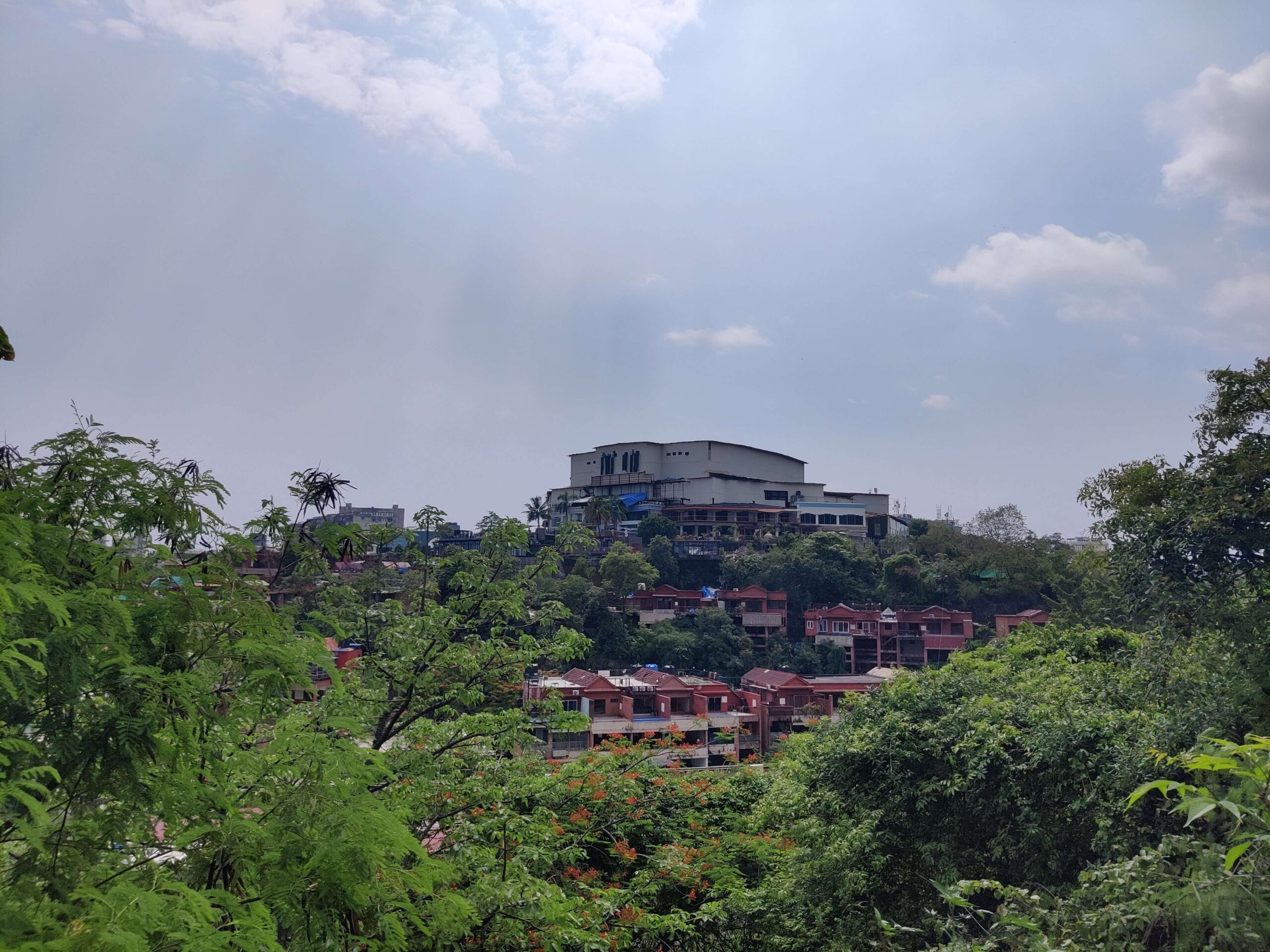
Patrick Geddes – are ignored.
Photo: Jashvitha Dhagey
Geddes, ahead of the times he lived in, had emphasised the importance of recycling with the specific suggestion in many city plans to use sewage to make manure for a city’s gardens.[7] As in the Bandra Plan, in the Thana Plan too, Geddes makes a strong case for planting trees and goes a step further to write about “…a less untidy disposition of the refuse…(and) the contents of the latrine wastefully thrown into the creek”. The sewage and waste which finds their way into rivers needs to be treated if the rivers have to be brought back to life. This could also lead to improved biodiversity in and around the city’s water bodies.
A common thread which runs through Geddes’ town planning work is the explicit detail about spaces which could be reclaimed by trees and greenery.[8] While some of Mumbai’s land parcels can be reclaimed for planting trees, the city already has Aarey, one of the biggest forests within a city anywhere in the world. The botanist in Geddes would have been thrilled at the riches of biodiversity of flora and fauna inside Aarey. It was only because the area was protected all these decades, with a few unpardonable exceptions, that the large variety of species of trees, butterflies, and other creatures thrived. The importance that Geddes gave to planting native trees was an extension of his ideas of the conservation of resources; Aarey represents this already.
Geddes believed in making city plans for people, not for the place. Aarey has a long-standing Adivasi population, the Warli tribe, living within its folds doing subsistence farming on the land they own, preserving the natural habitat and resisting the creeping “development” which threatens their lives and livelihoods. Some of the ill-advised earlier construction has already displaced several families and rendered many of the older Warlis helpless. How does the Development Plan 2034 earmarked with construction projects inside Aarey benefit its oldest citizens?
Aarey’s uncertain future
The last few weeks have seen an indiscriminate “trimming” of the trees despite the Supreme Court orders in the last four to five weeks directing the Mumbai Metro Rail Corporation Limited (MMRCL) to not cut trees; officials told the court that they had not cut trees but only “trimmed” bushes on the plot allotted for the Metro car shed. This trimming, rather cutting, followed the new Maharashtra government’s revocation of the stay order on the work inside Aarey which was issued by the previous government headed by Uddhav Thackeray.
Within hours of taking charge on June 30, the new government, specifically deputy chief minister Devendra Fadnavis, ordered shifting back the car shed to the Aarey land and set in process the certain de-greening of the area. Since then, concerned citizens, including activists and Warlis, have protested every Sunday within Aarey to pressurise the government to shift the car shed to the alternative site at Kanjurmarg. Since the Thackeray-led government had paused work in December 2019, greenery and wildlife had returned to the area, protesters pointed out.
The protests continue every Sunday, police action follows too. If only Fadnavis would read Geddes’ approach to urban planning, he might realise the value of protecting and conserving Aarey. The protesters, perhaps unknown to them, are taking the Geddesian way by trying to have a say in the future of Aarey and simultaneously educating others in Mumbai about the natural riches. Geddes did write about the need for civic education in cities, and that access to nature and natural conditions were important for the mental and physical health of citizens.
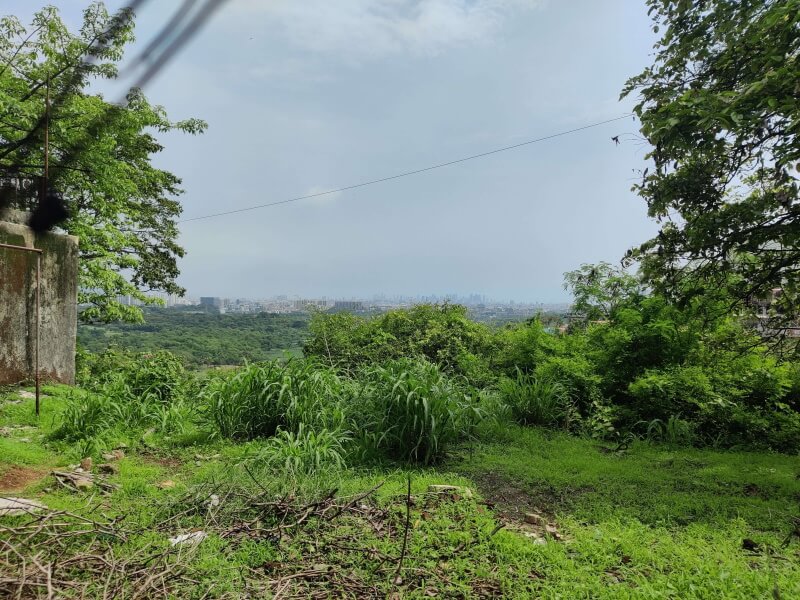
Photo: Jashvitha Dhagey
Such access to nature, he believed, should be equitable which meant that cities needed to be reimagined keeping in mind the variations of class and gender of their population. He argued that geology, geography, climate, economic life, and social institutions should all be considered while beautifying a city. He had encouraged local people of Edinburgh to directly participate in the beautification, art, culture, and education of the community, and inspired the local community to take charge of their surroundings. [9]
The green in city plans
Geddes, in his writing and work in Edinburgh, stressed on the balance – or the lack of it – between cities and nature, and attributed their health or well-being to each other. In Edinburgh’s Old Town, the praxis he is most remembered by, he created green spaces in what was then cramped and overcrowded area, allowing the place to breathe and consciously building the much-needed play spaces for children.[10] He believed that gardens and green spaces were essential for encouraging people to be active and outdoor.
Geddes also emphasised on producing local food to improve the local environment, and that community building was the way to learn about biodiversity and changing seasons. By knowing more about the nature in cities, residents would feel encouraged to take responsibility for their local environment, he argued. In Edinburgh and other cities for which he drew up plans, Geddes made use of disused and derelict spaces, however small, to create green spaces and gardens for the local inhabitants to tend to and enjoy. [11]
The Geddesian idea of engaging communities in the regeneration or renewal of nature in cities has been turned on its head in Mumbai’s Aarey where the government is steam-rolling with its “urbanisation” plan at the cost of the green cover. The car shed, which could prove to be environmentally costly for the city in the years to come, could have been shifted to another location with minimum impact on the Metro line. And, Aarey could have been the place to bring people and nature together.
Jashvitha Dhagey developed a deep interest in the way cities function, watching Mumbai at work. She holds a post-graduate diploma in Social Communications Media from Sophia Polytechnic. She loves to watch and chronicle the multiple interactions between people, between people and power, and society and media.
Dnyaneshwari Burghate, a post-graduate in Women’s Studies with additional qualifications in media, is a researcher, photographer, and story-teller. She documents stories at the intersection of gender, media and society.
Cover photo: Jashvitha Dhagey

